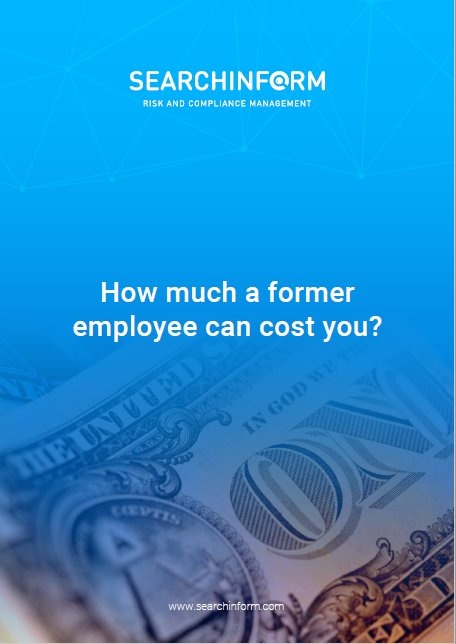Employee Engagement Metrics and KPIs: A Comprehensive Guide
- Defining Employee Engagement
- What Are Employee Engagement Metrics?
- Why Employee Engagement Matters
- The Difference Between Engagement, Satisfaction, and Commitment
- The Business Impact of Employee Engagement
- Key Employee Engagement Metrics
- Absenteeism Rate: A Sign of Disengagement?
- Turnover Rate: Voluntary vs. Involuntary
- Employee Net Promoter Score (eNPS): How Likely Are Employees to Recommend the Company?
- Employee Satisfaction Index (ESI): Measuring Satisfaction and Beyond
- Internal Promotion Rate: How Much Growth Is Happening Internally?
- Training Completion Rate: Investment in Employee Growth
- Time to Productivity: How Quickly Are New Hires Hitting Their Stride?
- Internal Communication Metrics: Building a Strong Connection
- Putting It All Together: Using Engagement Metrics to Drive Change
- Key Performance Indicators (KPIs) for Employee Engagement
- Setting SMART KPIs: A Clear Roadmap for Engagement
- Linking KPIs to Business Objectives: Alignment Drives Results
- Regularly Reviewing and Adjusting KPIs: Flexibility is Key
- Moving Beyond the Numbers: The Human Element of KPIs
- Practical Application of KPIs in Employee Engagement
- What’s Next? Using Tools and Technologies to Enhance Engagement Metrics
- Tools and Technologies for Tracking Engagement Metrics
- HRIS Platforms: The Backbone of Engagement Tracking
- Employee Survey Platforms: Direct Feedback from Your Workforce
- Data Analytics and Reporting Tools: Turning Metrics into Insights
- Next Steps: Turning Insights into Action
- Strategies for Improving Employee Engagement Based on Metrics
- Taking Action on Data Insights: Making Metrics Work for You
- Creating a Positive Work Environment
- Providing Opportunities for Growth and Development
- Recognizing and Rewarding Employee Contributions
- Creating Clear Career Pathways
- Fostering Open Communication
- The Power of Regular Feedback
- Putting Engagement Strategies into Practice
- Case Studies: Real-World Applications of Employee Engagement Metrics
- Case Study 1: Improving Retention Through Targeted Recognition
- Case Study 2: Enhancing Career Development to Boost Engagement
- Case Study 3: Using Data Analytics to Address Communication Gaps
- Case Study 4: Boosting Engagement in Remote Teams
- Lessons Learned from Real-World Engagement Strategies
Defining Employee Engagement
What Are Employee Engagement Metrics?
Employee engagement metrics are essential for any organization aiming to understand how deeply employees are connected to their work. These engagement metrics, such as turnover rates, absenteeism, and performance indicators, offer valuable insights into employee commitment and motivation. By monitoring these key performance indicators (KPIs), companies can assess engagement levels, identify areas for improvement, and implement strategies to boost overall productivity and satisfaction.
Why Employee Engagement Matters
Employee engagement isn't just about keeping employees happy—it’s about fostering a deep connection between them and their work. Engaged employees care about the company’s goals and are motivated to help achieve them. High engagement is linked to improved productivity, lower turnover, and better customer satisfaction, ultimately leading to greater profitability. But what exactly is it, and why is it so important?
The Difference Between Engagement, Satisfaction, and Commitment
Employee engagement goes beyond satisfaction and commitment. Satisfaction may mean an employee is content, but engagement indicates they’re fully invested in the organization’s success. Commitment refers to an employee’s loyalty to the company, while engagement shows active participation in the company’s vision and mission. This deeper connection often results in employees who are more motivated, enthusiastic, and productive.
The Business Impact of Employee Engagement
For businesses, the impact of engagement is far-reaching. High employee engagement KPIs lead to a more productive workforce, better job performance, and lower absenteeism. On the flip side, low engagement often results in higher turnover rates, less motivation, and ultimately a decline in company performance. Understanding employee engagement metrics, such as turnover rates, absenteeism, and internal promotion rates, helps businesses assess the level of engagement and identify areas for improvement.
These engagement KPIs are crucial to understanding how employees connect with their roles and the company as a whole. By tracking performance metrics and key metrics, companies can gain a clearer picture of their organizational health and make data-driven decisions to foster a more engaged and motivated workforce.
To take action and improve employee engagement, it’s vital to track the right key metrics. These key performance indicators (KPIs) provide actionable insights that can help businesses create a work environment that fosters engagement. Let's dive into the most important metrics to monitor.
Key Employee Engagement Metrics
Employee engagement is not a one-size-fits-all concept. To truly understand how employees are connected to their work, organizations must dig deeper into specific metrics that measure this connection. Tracking the right employee engagement metrics provides businesses with valuable insights into how motivated, committed, and productive their workforce is. But what exactly are these key metrics, and why do they matter so much?
Absenteeism Rate: A Sign of Disengagement?
When employees are frequently absent, it often signals something deeper than just personal time off. Absenteeism is a key employee engagement metric that directly correlates with employee satisfaction and motivation. For example, a company that faces a spike in absenteeism right after a major change in leadership might find that employees are disengaged or unsure of the new direction. Tracking absenteeism gives organizations a clearer picture of workforce health. Are employees missing work because they’re overwhelmed, uninspired, or disconnected from the company’s values?
Organizations can tackle this by regularly assessing their workplace culture. If absenteeism is high, it could mean employees feel undervalued or disconnected from their roles. Offering flexible schedules, improving communication, and fostering a more supportive work environment could address these underlying issues.
Turnover Rate: Voluntary vs. Involuntary
Turnover is a classic metric for employee engagement, but it’s not just about counting how many people leave. The nature of the turnover—whether voluntary or involuntary—matters significantly. Voluntary turnover occurs when employees choose to leave, which can often indicate dissatisfaction with the company, work culture, or management. Involuntary turnover, on the other hand, is more likely tied to poor performance or mismatches between employees’ skills and the job requirements.
For example, a retail company that loses high-performing sales staff regularly might look at their internal training programs or compensation packages to uncover why top performers are leaving. Tracking turnover in different departments or job levels helps organizations pinpoint patterns and take targeted actions. Perhaps a division is struggling with low engagement, while another is thriving, providing opportunities to adjust management approaches and retention strategies accordingly.
Employee Net Promoter Score (eNPS): How Likely Are Employees to Recommend the Company?
The eNPS is a straightforward yet powerful tool for measuring employee loyalty and engagement. It’s based on a simple question: “On a scale from 0 to 10, how likely are you to recommend this company as a place to work?” Employees who rate the company highly are considered promoters, while those who rate it poorly are detractors.
When a company sees a dip in their eNPS, it’s a clear signal that employee engagement might be slipping. For instance, a tech startup experiencing a decline in eNPS could prompt an internal review of work-life balance, management transparency, or career development opportunities. It’s not just a number; it’s a call to action. A low eNPS requires organizations to dig deeper into the why and come up with strategies to improve employee satisfaction, communication, and leadership practices.
Employee Satisfaction Index (ESI): Measuring Satisfaction and Beyond
The Employee Satisfaction Index (ESI) is a key metric for understanding how employees feel about various aspects of their workplace. This could include their relationship with managers, the work environment, compensation, career growth opportunities, and more. Surveys and feedback forms help capture this data, but how companies act on the findings is what matters most.
A company that consistently tracks ESI might discover, for example, that employees are dissatisfied with their development opportunities. If training programs are not aligned with employee expectations, it can negatively impact engagement. To improve ESI and employee engagement, organizations can implement targeted training, professional development, or mentorship programs that empower employees to advance in their careers.
Internal Promotion Rate: How Much Growth Is Happening Internally?
An internal promotion rate is a telling metric about employee engagement and organizational culture. When employees are promoted from within, it signals a company’s commitment to nurturing talent and fostering career growth. High internal promotion rates are linked to higher engagement because they show that employees have the opportunity to advance without leaving the company.
Consider a company that has made significant strides in improving employee engagement by increasing internal promotion opportunities. Employees see that their hard work and dedication lead to career growth, motivating them to perform at their best. On the flip side, low promotion rates may lead to disengagement, as employees feel stuck and unable to progress within the organization.
Training Completion Rate: Investment in Employee Growth
Employee development is a cornerstone of engagement, and the training completion rate can show how effectively companies are supporting this growth. When employees actively engage in training programs, it demonstrates their commitment to improving their skills and advancing within the company. A high training completion rate reflects an organization’s investment in its employees and their development, signaling a healthy engagement culture.
However, a low training completion rate might indicate a lack of engagement or interest in the programs offered. Companies can address this by making training programs more relevant, accessible, and engaging. Offering continuous learning opportunities ensures that employees feel supported in their professional growth, which is a key driver of long-term engagement.
Time to Productivity: How Quickly Are New Hires Hitting Their Stride?
For new hires, the time to productivity metric is a key indicator of both onboarding effectiveness and engagement. If employees take longer to become productive, it may signal that they’re not fully connected to their role or the company’s culture. Fast-tracking this transition by providing proper support, training, and mentorship can enhance engagement and increase overall productivity.
A retail company, for example, might measure time to productivity by tracking how long it takes new hires to meet sales targets. If the time is longer than expected, the organization could reassess its onboarding process, provide clearer role expectations, or improve training tools to help employees succeed faster.
Internal Communication Metrics: Building a Strong Connection
Effective internal communication is a pillar of employee engagement. By measuring communication metrics—such as how employees feel about the clarity, frequency, and transparency of internal communications—companies can gauge engagement levels. If communication is poor, employees may feel disconnected from leadership, unclear about their roles, or uncertain about company goals.
For example, if a company notices that internal communication metrics are low, it could implement more regular check-ins, use collaboration tools, or introduce open forums for employees to ask questions and share feedback. Ensuring that employees feel informed and included in the company’s journey is essential for fostering a positive engagement culture.
Putting It All Together: Using Engagement Metrics to Drive Change
As you track these key metrics, the goal isn’t just to measure engagement but to use that data to drive meaningful change. From increasing internal promotion rates to refining training programs, each metric provides an opportunity to improve employee satisfaction and performance. The more data-driven the approach, the more likely a company will see tangible improvements in engagement and overall organizational health.
In the next section, we’ll look at how to set and review key performance indicators (KPIs) to ensure that these engagement metrics translate into actionable, measurable results. Keep reading to discover how smart KPIs can help create a culture where engagement thrives and businesses succeed.
Key Performance Indicators (KPIs) for Employee Engagement
Employee engagement is a powerful driver of organizational success. But how do you measure it in a way that makes a tangible difference? That’s where key performance indicators (KPIs) come in. KPIs for employee engagement are more than just numbers on a dashboard—they provide insights that guide decision-making, improve workplace culture, and boost productivity. By carefully selecting and tracking the right KPIs, organizations can understand where they stand in terms of engagement and take action to improve it.
Setting SMART KPIs: A Clear Roadmap for Engagement
One of the most effective ways to set employee engagement KPIs is by following the SMART framework: Specific, Measurable, Achievable, Relevant, and Time-bound. This approach ensures that the KPIs are not only clear but also aligned with business goals. For instance, rather than setting a vague target like "improve employee engagement," a SMART KPI could be, "Increase the Employee Net Promoter Score (eNPS) by 15% within the next quarter."
By setting these clear and actionable goals, you provide a roadmap for improving employee engagement that’s both realistic and measurable. For example, if a company wants to boost engagement metrics related to career development, it might set a KPI such as, "Increase the percentage of employees who have participated in at least one professional development course by 25% over the next six months."
Linking KPIs to Business Objectives: Alignment Drives Results
Employee engagement KPIs are most effective when directly linked to broader business objectives. Consider a company striving to improve customer satisfaction. Engaging employees who are happy with their work and feel valued will likely translate into better customer interactions and higher service quality. Thus, KPIs related to engagement—such as improving internal communication metrics or increasing internal promotion rates—can play a critical role in achieving this business goal.
In practice, this might mean linking specific engagement KPIs to key business outcomes like sales growth or customer retention. For instance, a KPI could be: “Increase the internal promotion rate by 10% over the next year to foster a culture of growth and improve long-term employee retention.” When employee engagement goals are tied to organizational success, employees feel more connected to the company’s overall mission and are more motivated to contribute their best work.
Regularly Reviewing and Adjusting KPIs: Flexibility is Key
Employee engagement is not static, and neither should be your KPIs. Regular reviews are essential to ensure that the metrics are still relevant and aligned with your organization’s evolving goals. If engagement levels are dropping, it’s important to assess whether the KPIs you’re tracking reflect the current challenges or opportunities.
For example, let’s say a company’s eNPS score has been steadily declining over the past few months. After conducting a survey, it becomes clear that employees feel disconnected due to lack of recognition. In this case, the company might adjust its KPIs to include specific metrics around recognition programs and employee feedback loops. The goal would be to track the impact of recognition efforts on engagement and adjust tactics accordingly.
In other situations, businesses may need to pivot KPIs entirely, especially if the organization’s strategic direction changes. For example, if a company shifts focus toward innovation, it might introduce KPIs related to collaboration, creativity, and cross-departmental teamwork as part of their employee engagement strategy.
Moving Beyond the Numbers: The Human Element of KPIs
While numbers and data are crucial for tracking engagement, it’s equally important to remember the human element behind the KPIs. Metrics like turnover rates or eNPS scores may tell part of the story, but they don’t always capture the emotions or experiences that drive engagement.
Take, for instance, an organization that’s focusing on improving employee satisfaction through better work-life balance. Instead of just tracking hours worked or absenteeism, it might be valuable to also include qualitative feedback, such as how employees feel about their workload or the company’s flexibility. This can provide a deeper understanding of engagement and reveal areas that purely quantitative metrics might miss.
This human perspective is key for truly actionable KPIs. By combining hard data with qualitative insights, companies can paint a more complete picture of employee engagement and make more informed decisions.
Practical Application of KPIs in Employee Engagement
In real-world scenarios, companies that use KPIs to track employee engagement often see measurable improvements. For example, a technology firm might track the time to productivity for new hires as a performance metric to gauge how effectively employees are integrated into the team. By improving onboarding processes and ensuring that new hires feel welcomed and supported, the company could reduce the time it takes for employees to contribute meaningfully to projects.
Another example might be a retail company looking at turnover rates as part of their employee engagement metrics. By analyzing the reasons behind voluntary turnover and identifying patterns, the company might implement changes, such as increasing employee recognition or offering better growth opportunities. Tracking these KPIs allows them to pinpoint the root causes of disengagement and address them before they lead to further turnover.
The key takeaway is that KPIs are not just about numbers—they’re about fostering a culture of continuous improvement and actively listening to employees' needs. By setting, tracking, and adjusting KPIs, organizations can create an environment that encourages employees to thrive, stay engaged, and contribute to the company’s overall success.
What’s Next? Using Tools and Technologies to Enhance Engagement Metrics
Tracking employee engagement KPIs is just the start. To make the most of these insights, organizations need the right tools and technologies. In the next section, we’ll explore how HRIS platforms, survey tools, and data analytics can help transform engagement metrics into actionable strategies, driving real change in employee satisfaction and performance.
Tools and Technologies for Tracking Engagement Metrics
Understanding employee engagement metrics is crucial, but the real power comes from the tools and technologies that help you collect, analyze, and act on this data. The right technology can transform raw numbers into meaningful insights, allowing you to make informed decisions that drive engagement and improve company culture.
HRIS Platforms: The Backbone of Engagement Tracking
Human Resource Information Systems (HRIS) are the foundation of tracking engagement metrics. These platforms allow organizations to centralize employee data, from performance metrics to turnover rates, making it easier to analyze trends over time. For example, an HRIS platform can track changes in absenteeism or turnover across different departments, helping you quickly identify areas of concern.
For instance, a company struggling with high turnover in its customer service team might use its HRIS to pull data showing that employees in this department have low engagement scores and poor internal communication metrics. Armed with this data, HR can work with managers to implement targeted interventions, such as improving team communication or offering better career development opportunities, which can directly impact engagement levels.
Employee Survey Platforms: Direct Feedback from Your Workforce
Surveys are one of the most effective ways to gauge employee engagement. Platforms dedicated to employee surveys can help measure everything from job satisfaction to eNPS (Employee Net Promoter Score). These tools gather real-time feedback, which is essential for tracking engagement KPIs over time.
A tech startup, for example, might use survey tools to check in with employees on a quarterly basis, asking specific questions about their workload, work-life balance, and management support. By continuously gathering this feedback, the company can adjust its engagement strategies to address any concerns before they lead to disengagement or turnover. The key here is to act on the data—simply collecting feedback is not enough if the insights aren’t translated into action.
Data Analytics and Reporting Tools: Turning Metrics into Insights
Analytics tools are the bridge between raw data and actionable insights. These technologies enable organizations to dig deeper into engagement metrics and find patterns that may not be immediately obvious. For example, a retail company could use analytics software to track performance metrics across different store locations, identifying which teams have the highest levels of engagement and what practices they have in common.
With this information, the company can develop best practices that are shared across the organization, improving engagement at stores with lower performance metrics. Data analytics can also identify underlying issues affecting employee engagement, such as workload imbalances or ineffective leadership, allowing for targeted interventions.
Next Steps: Turning Insights into Action
The right tools are essential for gathering the data you need to track engagement metrics. However, the real challenge lies in turning these insights into meaningful action. The next step is using these tools and technologies to inform strategies that actively boost employee engagement. By combining data from multiple sources and continuously monitoring key metrics, organizations can create an environment where employees are motivated, connected, and invested in the company’s success.
Strategies for Improving Employee Engagement Based on Metrics
Once you’ve established a clear set of employee engagement metrics and KPIs, the next step is using those insights to fuel meaningful change. Metrics provide a snapshot, but it’s the strategies you implement based on these findings that drive improvement. By actively listening to your data and aligning your efforts with what matters most to your employees, you can foster a more engaged workforce that thrives on productivity, satisfaction, and retention.
Taking Action on Data Insights: Making Metrics Work for You
Imagine a scenario: after tracking engagement metrics, you notice that one department consistently lags behind others in terms of employee satisfaction and performance metrics. The next logical step is to dig deeper. You may find that employees in this department feel disconnected due to a lack of clear communication from leadership, or perhaps they’re dissatisfied with career development opportunities. These insights provide a powerful foundation for action.
For example, if internal communication scores are low, a company might implement regular team check-ins or create more transparent channels where employees can provide feedback. These adjustments don’t just improve the specific metric—they also foster an environment where employees feel heard and valued, ultimately boosting engagement across the board.
Creating a Positive Work Environment
A positive work environment is the backbone of strong employee engagement. But how can you measure it? Employee engagement KPIs like satisfaction scores and feedback from surveys can help paint a picture. When employees feel supported, respected, and valued, their engagement metrics naturally rise. This can translate into everything from increased productivity to improved retention rates.

Take a tech company that realizes through their performance metrics that high-performing teams have one thing in common: they have regular recognition programs. Employees in these teams feel appreciated, which in turn increases their motivation and satisfaction. The company could adopt similar recognition programs across other teams, making employees feel more connected and engaged in their work.
Providing Opportunities for Growth and Development
One of the most compelling drivers of employee engagement is growth—both personal and professional. When employees feel that their career paths are supported and their development is prioritized, they are more likely to stay engaged. This can be measured by metrics such as internal promotion rates or training completion rates, which reflect the opportunities employees have to grow within the company.
Consider a financial services company that tracks training completion rates. When they see that a particular department has a lower rate, it suggests that employees in that area may not feel motivated to engage with developmental resources. By providing more accessible training, or offering mentorship opportunities, the company can turn this around. Employees will not only feel that the company is invested in their success but will also be more likely to take on new challenges.
Recognizing and Rewarding Employee Contributions
Recognition plays a significant role in employee engagement. Tracking recognition metrics—whether it’s the frequency of praise, the type of rewards, or employee responses—can help you identify how often employees feel appreciated. When organizations actively recognize their employees’ efforts, it can lead to higher job satisfaction and stronger performance.
For example, a retail chain notices that employees in customer-facing roles report lower engagement scores, particularly regarding recognition. To address this, the company could implement a rewards system that highlights outstanding performance with public acknowledgment, bonuses, or other incentives. The positive feedback loop created by such recognition fuels engagement and encourages employees to continue excelling in their roles.
Creating Clear Career Pathways
Employees want to know that they have a future with the company. Tracking internal promotion rates or conducting regular career development surveys can help companies understand if employees feel their potential is being nurtured. When employees can see a clear progression from their current roles to future opportunities, their engagement rises.
A manufacturing company, for instance, could use employee engagement metrics to identify if workers in entry-level positions feel there is room for advancement. If the data reveals that these employees are leaving for opportunities elsewhere, the company might implement more structured career progression plans, making it clear that hard work and dedication can lead to promotions and greater responsibilities.
Fostering Open Communication
Effective internal communication can make or break employee engagement. Metrics that measure the effectiveness of communication channels—such as employee surveys and feedback loops—can reveal whether information is flowing freely and if employees feel informed and included.
For instance, after reviewing internal communication metrics, a nonprofit organization discovers that employees in remote locations feel disconnected from the main office. By introducing more frequent video meetings, creating virtual channels for feedback, and enhancing transparency in decision-making, the organization can bridge the gap, ensuring that employees feel involved and valued despite their physical distance.
The Power of Regular Feedback
Employee engagement is not a one-time check; it requires constant attention. This is where regular feedback comes in. With consistent pulse surveys or eNPS evaluations, companies can monitor the health of employee engagement over time. These tools provide an opportunity to assess employee sentiment continuously, making it easier to respond to issues before they escalate.
For example, a global consulting firm might implement monthly feedback surveys to track employee engagement levels. If there’s a sudden dip in scores, especially after a major organizational change, HR can immediately investigate and address concerns before morale drops further. Quick, actionable responses to real-time data help maintain high engagement across all teams and departments.
Putting Engagement Strategies into Practice
Tracking employee engagement metrics is just the beginning. The true impact comes from applying these insights to create targeted strategies. By acting on key metrics like turnover rates, internal promotions, and satisfaction levels, organizations can foster an environment where employees are motivated and supported. The real change happens when these actions translate into improved engagement across the board. To see how this plays out in real-world scenarios, let’s explore some case studies of companies successfully turning engagement metrics into meaningful outcomes.
Case Studies: Real-World Applications of Employee Engagement Metrics
Now that we’ve explored the importance of tracking and acting on employee engagement metrics, let’s look at how these insights play out in real-life situations. Case studies provide valuable lessons on how different organizations have successfully applied engagement KPIs to improve employee satisfaction, retention, and overall performance. These examples offer practical insights and actionable strategies that can help other companies refine their engagement efforts.
Case Study 1: Improving Retention Through Targeted Recognition
A mid-sized software company faced a troubling increase in turnover rates, especially among its top performers. After analyzing performance metrics and conducting employee surveys, the HR team identified a common theme—employees felt underappreciated, and recognition was rare. They decided to act on this data by introducing a structured recognition program that rewarded both individual and team achievements.
By setting clear employee engagement KPIs around recognition (such as the number of recognition instances per month), they were able to track progress. Over the next six months, the company saw a significant reduction in turnover and an increase in employee satisfaction scores. Employees reported feeling more connected to the company, motivated by the acknowledgment of their hard work.
Case Study 2: Enhancing Career Development to Boost Engagement
At a global consulting firm, internal promotion rates were lower than expected, and engagement scores were reflecting this. Employees in junior roles felt there were limited opportunities for growth, leading to disengagement. Performance metrics suggested that those who stayed with the company for extended periods often left because they did not see a clear career path ahead.
The company decided to overhaul its career development program. By introducing mentorship opportunities and clearer, more structured advancement tracks, they were able to show employees a path forward. Within a year, internal promotion rates rose, and employee engagement KPIs such as satisfaction and loyalty improved as a result. Employees felt that the company was investing in their futures, which made them more committed and engaged in their work.
Case Study 3: Using Data Analytics to Address Communication Gaps
A large retail chain noticed that engagement metrics across its regional offices were inconsistent. Some stores had high employee satisfaction and strong performance metrics, while others struggled. By using data analytics tools to track engagement KPIs and feedback from employee surveys, the company discovered that poor internal communication was at the heart of the issue.
The solution was simple but effective: they implemented more consistent communication practices, including monthly all-hands meetings, better use of collaboration tools, and a platform for employees to voice concerns directly to leadership. Within a few months, the company saw improvements in both employee engagement metrics and store performance. Employees felt more informed and connected, and this transparency fostered a sense of trust in leadership.
Case Study 4: Boosting Engagement in Remote Teams
A tech startup, with a large portion of its workforce working remotely, was struggling with low engagement metrics. Despite offering flexible schedules and good benefits, employee surveys revealed that remote workers felt disconnected from the company culture. This gap in engagement was particularly visible in performance metrics, where remote employees were less productive than their in-office counterparts.
The company took a bold approach to change. They introduced regular virtual team-building activities, established clear communication channels, and provided employees with tools for better collaboration. They also tracked engagement KPIs specifically for remote workers, such as participation in team meetings and feedback on company initiatives. Over time, the remote teams felt more integrated into the culture, and performance metrics improved, demonstrating that engagement can be successfully fostered, no matter the work environment.
Lessons Learned from Real-World Engagement Strategies
These case studies highlight the power of employee engagement metrics in guiding organizational change. Whether it’s through improving recognition programs, offering clearer career paths, enhancing communication, or adapting to new work environments, data-driven strategies can transform employee engagement. The key takeaway is that engagement is not a one-time fix—it’s an ongoing process that requires continuous attention, data analysis, and adaptation.
Moving Forward: Leveraging Tools for Sustained Engagement
As we’ve seen in these case studies, the key to driving sustained employee engagement lies in turning data into actionable strategies. But how do you continue this momentum and ensure long-term success? The next step is integrating the right tools and technologies to track, analyze, and optimize your engagement efforts continuously. With the right solutions you can streamline data collection, monitor performance metrics, and refine strategies to keep engagement high across your organization. Let’s explore how advanced tools offered by SearchInform can help you maintain and build on the progress you’ve made in driving employee engagement.
SearchInform: Redefining Employee Engagement and Data Security through Innovative Monitoring Solutions
In an era marked by rapid digital transformation, organizations face a significant challenge: balancing the protection of sensitive data with the creation of a workplace environment that fosters trust and engagement among employees. While monitoring practices can often be perceived negatively, resulting in feelings of mistrust, SearchInform offers a fresh perspective that reveals how effective monitoring can elevate both security and employee morale.
At its core, SearchInform’s approach transcends traditional monitoring methods; it emphasizes empowerment and engagement. By leveraging advanced monitoring solutions, organizations can safeguard critical data while simultaneously nurturing a collaborative environment where employees feel valued and respected. This balanced approach protects vital assets while enabling employees to thrive.
Fostering Transparency through Thoughtful Monitoring
Picture a workplace where employees can deliver their best work without the nagging worry of being constantly monitored. Now, imagine this environment backed by sophisticated security measures that protect against data breaches. With SearchInform, this scenario is entirely attainable.
Unlike conventional monitoring systems that may feel invasive, SearchInform champions a culture of openness. Employees are informed about the monitoring processes in place and the rationale behind them, promoting shared responsibility for security. By inviting open dialogue and encouraging feedback, SearchInform helps employees understand how their actions contribute to safeguarding the organization’s assets, transforming monitoring from a practice of oversight into a collaborative exchange. When workers recognize that security is an integral part of their roles—and not merely a set of restrictions—they become more engaged and motivated. They see compliance not as a burden, but as a shared commitment to the organization’s success.
Security Solutions that Empower Rather than Restrict
One of the prevailing concerns surrounding employee monitoring is the potential for overreach, leading to a stifling work environment. SearchInform addresses this apprehension through its unobtrusive data loss prevention (DLP) system, designed to work discreetly in the background. It steps in only when necessary, allowing employees to focus on their tasks without disruption.
For instance, if an employee tries to share a sensitive document via an unsecured method, SearchInform’s system can detect this risk and alert the appropriate personnel—all while permitting the employee to continue their work smoothly. This thoughtful approach ensures that employees feel supported rather than surveilled, emphasizing protection without compromising their productivity.
Encouraging Growth and Engagement through Insightful Monitoring
SearchInform believes that security and employee development can go hand in hand. Its innovative monitoring solutions do more than just ensure compliance; they also offer valuable insights into employee performance. This dual-purpose functionality allows managers to identify high performers, celebrate contributions, and pinpoint growth opportunities.
By intertwining security with performance insights, organizations can create a culture focused on continuous improvement and engagement. Managers are equipped not just to enforce security protocols, but to support their teams through constructive feedback and recognition, fostering an environment that thrives on mutual growth and accountability.
The Future of Security and Employee Engagement Starts Here
The interplay between employee engagement and data security doesn’t have to be contentious—it can be a harmonious union. SearchInform presents the perfect solution for organizations eager to enhance their protective measures while also prioritizing employee satisfaction and engagement. With its commitment to transparent monitoring, effective data loss prevention, and strategies aimed at fostering teamwork and communication, businesses can create a workplace where security is inherent and employees feel not only protected but also valued.
Are you prepared to revolutionize your workplace in a way that seamlessly integrates security with employee engagement? With SearchInform, this vision is not just a possibility—it represents the future of work. Let’s embark on the journey towards building a secure and engaged workforce today.
Extend the range of addressed challenges with minimum effort
Company news
SearchInform uses four types of cookies as described below. You can decide which categories of cookies you wish to accept to improve your experience on our website. To learn more about the cookies we use on our site, please read our Cookie Policy.
Necessary Cookies
Always active. These cookies are essential to our website working effectively.
Cookies does not collect personal information. You can disable the cookie files
record
on the Internet Settings tab in your browser.
Functional Cookies
These cookies allow SearchInform to provide enhanced functionality and personalization, such as remembering the language you choose to interact with the website.
Performance Cookies
These cookies enable SearchInform to understand what information is the most valuable to you, so we can improve our services and website.
Third-party Cookies
These cookies are created by other resources to allow our website to embed content from other websites, for example, images, ads, and text.
Please enable Functional Cookies
You have disabled the Functional Cookies.
To complete the form and get in touch with us, you need to enable Functional Cookies.
Otherwise the form cannot be sent to us.

Subscribe to our newsletter and receive a bright and useful tutorial Explaining Information Security in 4 steps!

Subscribe to our newsletter and receive case studies in comics!







